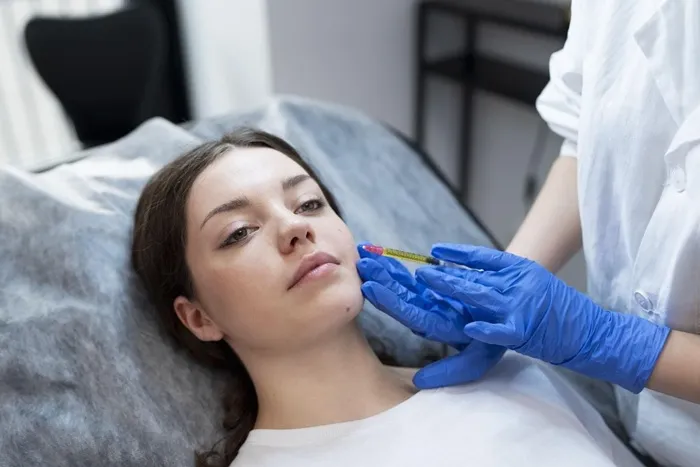In the realm of hair restoration and skin rejuvenation, Platelet – Rich Plasma (PRP) therapy has emerged as a popular treatment option. Often, PRP is associated with microneedling, a procedure that creates tiny punctures in the skin to enhance the absorption of PRP. However, many patients wonder: can PRP be done without microneedling? The answer is yes, and understanding the different approaches can help patients and medical professionals make informed decisions.
PRP Injection: A Microneedling – Free Approach
Direct Injection Technique
One of the most common ways to administer PRP without microneedling is through direct injection. In this method, the PRP, which is a concentrated form of a patient’s own platelets suspended in plasma, is injected directly into the target area. For hair restoration, the PRP is injected into the scalp. The injection is typically done using a fine – gauge needle, allowing the growth factors in the PRP to reach the hair follicles. The growth factors, such as Platelet – Derived Growth Factor (PDGF), Vascular Endothelial Growth Factor (VEGF), and Transforming Growth Factor – beta (TGF – β), can stimulate hair follicle growth, improve blood circulation to the scalp, and reduce inflammation.
Benefits of Direct Injection
Reduced Discomfort
Direct injection of PRP without microneedling can be less uncomfortable for patients. Microneedling, with its multiple tiny punctures, can cause some pain and discomfort. In contrast, direct injection involves fewer needle insertions, resulting in less overall discomfort.
Shorter Procedure Time
The direct injection method generally requires less time compared to PRP treatment combined with microneedling. This can be beneficial for patients with busy schedules or those who are anxious about longer procedures.
Topical Application of PRP
How It Works
Another way to administer PRP without microneedling is through topical application. In this approach, the PRP is applied directly to the surface of the skin. For effective absorption, the skin may be pre – treated with a mild exfoliant to remove the outer layer of dead skin cells. The growth factors in the PRP can then penetrate the skin to a certain extent, promoting skin rejuvenation and potentially stimulating hair follicle growth.
Limitations of Topical Application
Limited Penetration
One of the main limitations of topical PRP application is the limited penetration of the growth factors into the deeper layers of the skin. The skin’s outer layer, the stratum corneum, acts as a barrier, preventing the full absorption of the PRP. As a result, the effectiveness of topical PRP may be lower compared to direct injection.
Higher Risk of Evaporation
Topical PRP is also at a higher risk of evaporation before it can be fully absorbed by the skin. This can reduce the concentration of growth factors available for the treatment.
Comparison with PRP and Microneedling Combined
Enhanced Absorption with Microneedling
When PRP is combined with microneedling, the tiny punctures created in the skin act as channels, allowing the PRP to penetrate deeper into the skin. This enhanced absorption can lead to better results, especially in cases of severe hair loss or skin aging. The microneedling process also stimulates the body’s natural healing response, further enhancing the effects of the PRP.
Situations Where Microneedling – Free PRP Is Sufficient
Mild Hair Loss or Skin Concerns
For patients with mild hair loss or minor skin concerns, microneedling – free PRP may be sufficient. Direct injection or topical application can still provide some benefits, such as improved hair density or skin texture.
Patients with Sensitivities
Patients with sensitive skin or those who are averse to the discomfort of microneedling may opt for microneedling – free PRP. While the results may not be as dramatic as with microneedling, it can still offer a viable alternative.
Real – Life Experiences
Case 1: Tom’s Experience
Tom, a 30 – year – old male with mild male – pattern baldness, opted for direct injection of PRP without microneedling. After a series of treatments, he noticed a slight increase in hair density. He was satisfied with the results, especially considering the reduced discomfort and shorter procedure time.
Case 2: Lisa’s Experience
Lisa, a 40 – year – old female with early signs of skin aging, tried topical application of PRP. While she did not see a significant improvement in the fine lines on her face, she noticed that her skin felt smoother and more hydrated.
Conclusion
In conclusion, PRP can indeed be done without microneedling. Direct injection and topical application are two viable alternatives that offer their own set of advantages and limitations. The choice between microneedling – free PRP and PRP combined with microneedling depends on various factors, including the severity of the condition, patient preferences, and the advice of a qualified medical professional. By understanding these options, patients can make an informed decision about the most suitable PRP treatment for their needs.
Related topics:
- How Much Effective Is PRP for Hair Loss: What You Need To Know
- How Long Does Perimenopause Hair Loss Last?
- The Cost of PRP for Hair Loss: A Comprehensive Guide


